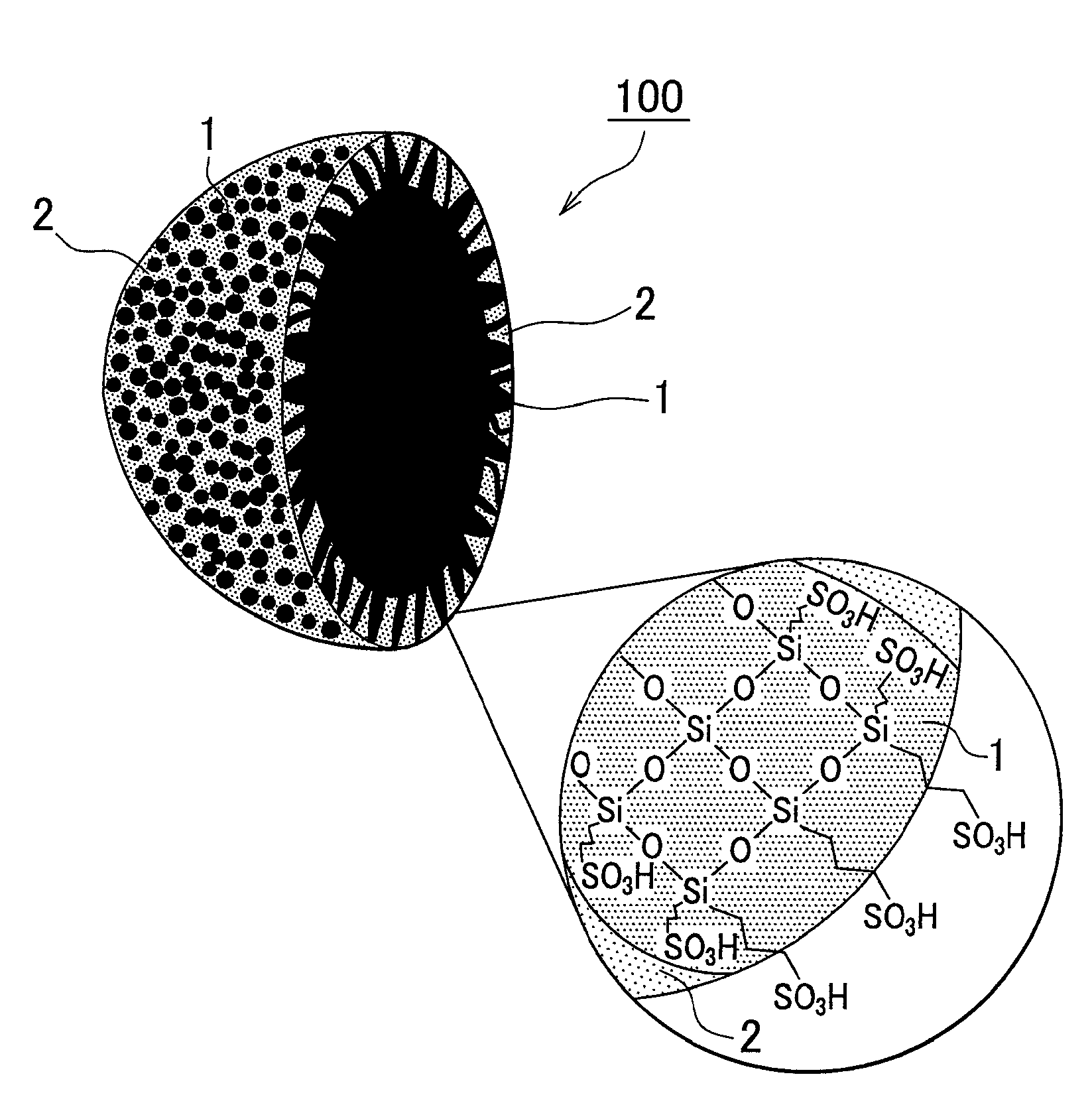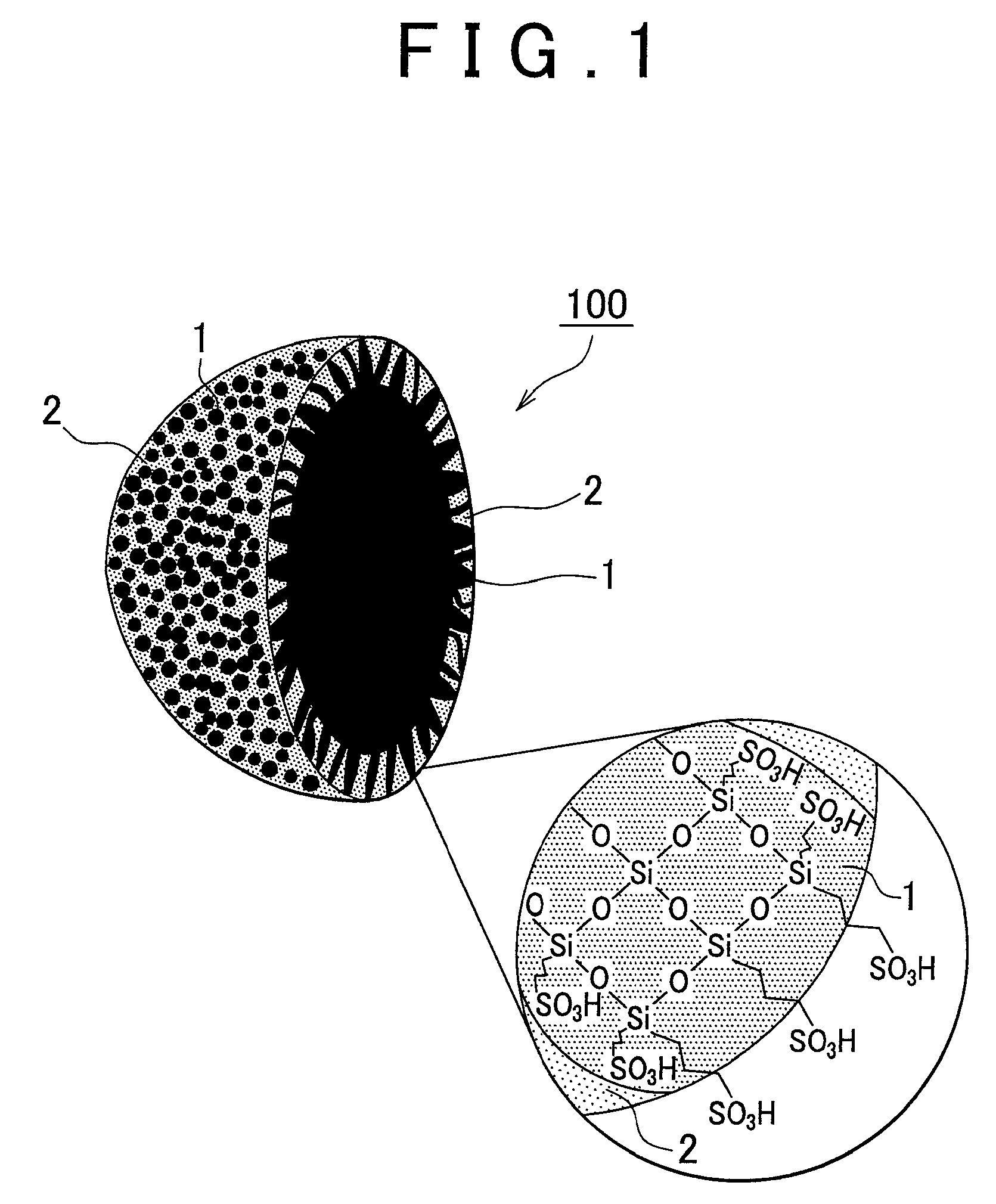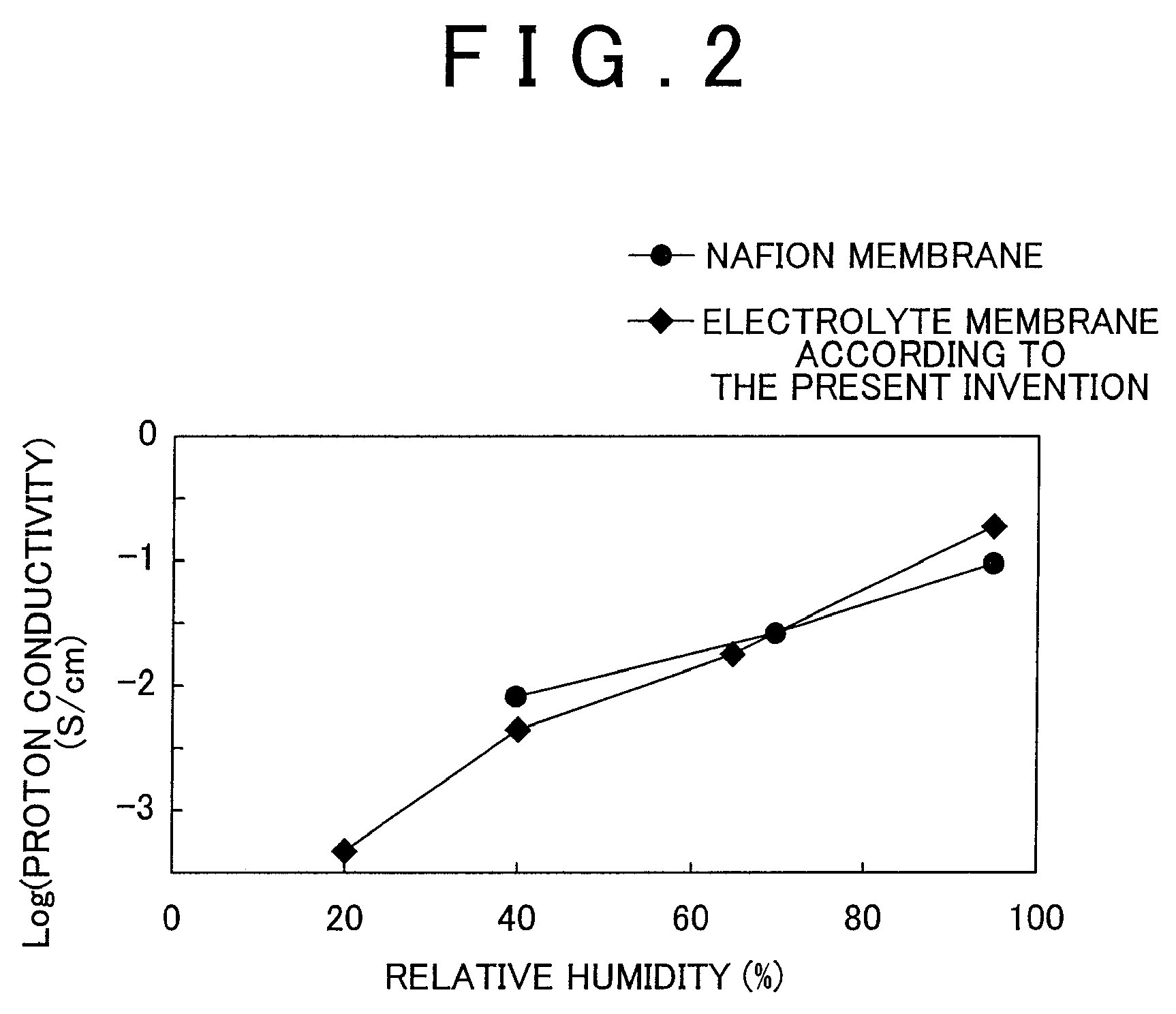Electrolyte membrane for fuel cell having hollow inorganic fine particles
a fuel cell and inorganic fine particle technology, applied in the field of electrolyte membrane for fuel cells, can solve the problems of shortening the service life of electrolyte, occurrence of heat-induced creep or thermal shrinkage, and insufficient proton conductivity value by itsel
- Summary
- Abstract
- Description
- Claims
- Application Information
AI Technical Summary
Benefits of technology
Problems solved by technology
Method used
Image
Examples
Embodiment Construction
[0019]The proton conductive material according to the embodiment will be described below in greater detail with reference to the appended drawings. FIG. 1 is a cross-sectional view of a powdered proton conductive material illustrating schematically a proton conductive material of the embodiment. An enlarged drawing of a cross-section that illustrates schematically a structural formula of the electrolyte resin is shown in the circle in the lower right portion of the figure. Broken lines connecting silicon atoms and sulfonic acid groups (—SO3H) in the circle in the lower right portion of the figure represent alkyl chains. A proton conductive material 100 includes an electrolyte resin 1 and inorganic fine particles 2, and the hollow inorganic fine particles 2 are filled with the electrolyte resin 1. The inorganic fine particles 2 have a large number of through-holes, and the electrolyte resin 1 is exposed via the through-holes on the surface of the inorganic fine particles.
[0020]As ind...
PUM
| Property | Measurement | Unit |
|---|---|---|
| particle size | aaaaa | aaaaa |
| heat resistance | aaaaa | aaaaa |
| size | aaaaa | aaaaa |
Abstract
Description
Claims
Application Information
 Login to View More
Login to View More - R&D
- Intellectual Property
- Life Sciences
- Materials
- Tech Scout
- Unparalleled Data Quality
- Higher Quality Content
- 60% Fewer Hallucinations
Browse by: Latest US Patents, China's latest patents, Technical Efficacy Thesaurus, Application Domain, Technology Topic, Popular Technical Reports.
© 2025 PatSnap. All rights reserved.Legal|Privacy policy|Modern Slavery Act Transparency Statement|Sitemap|About US| Contact US: help@patsnap.com



